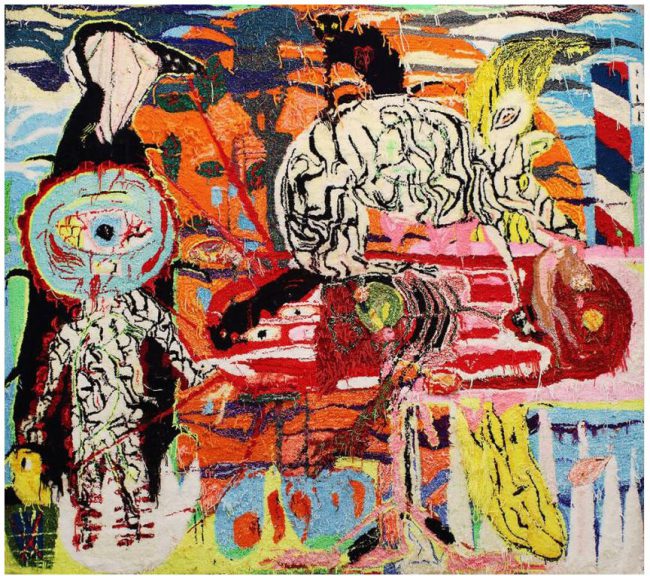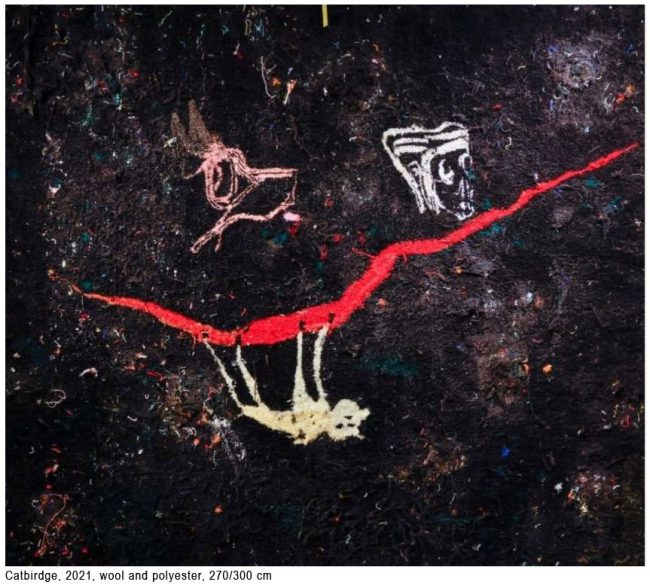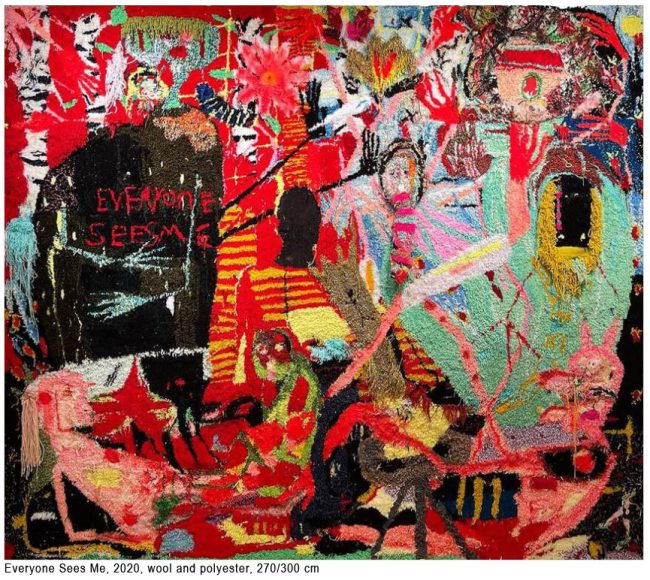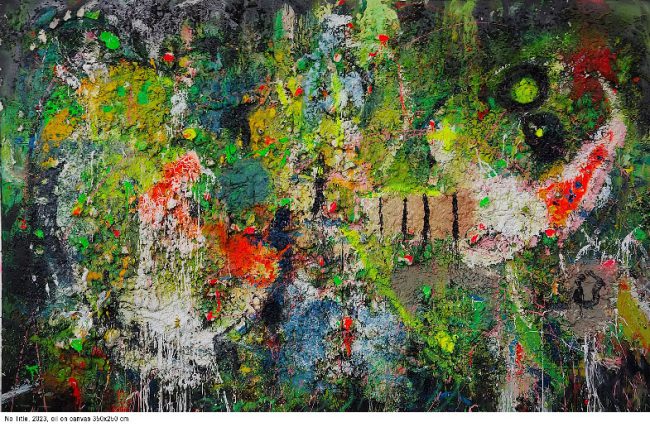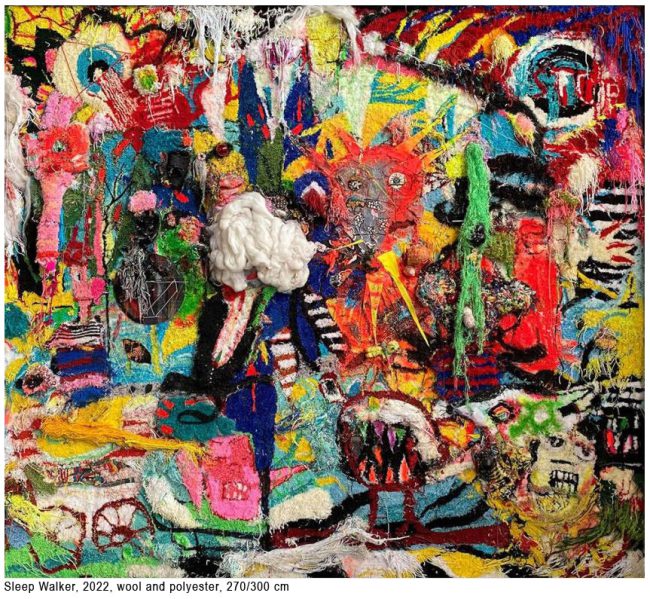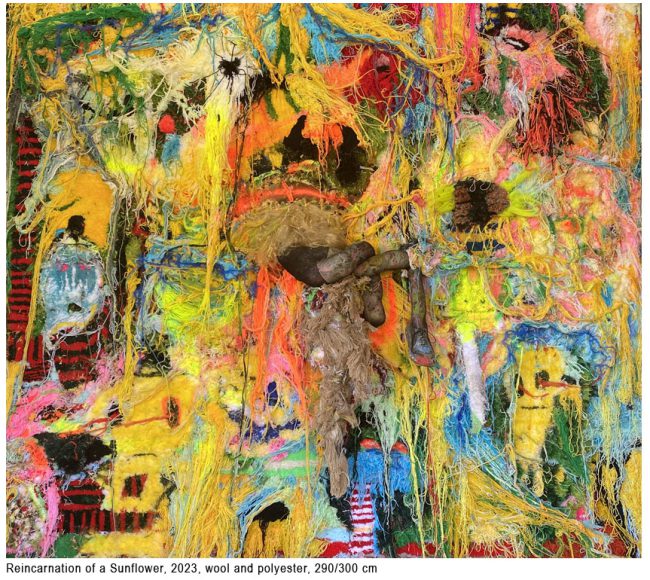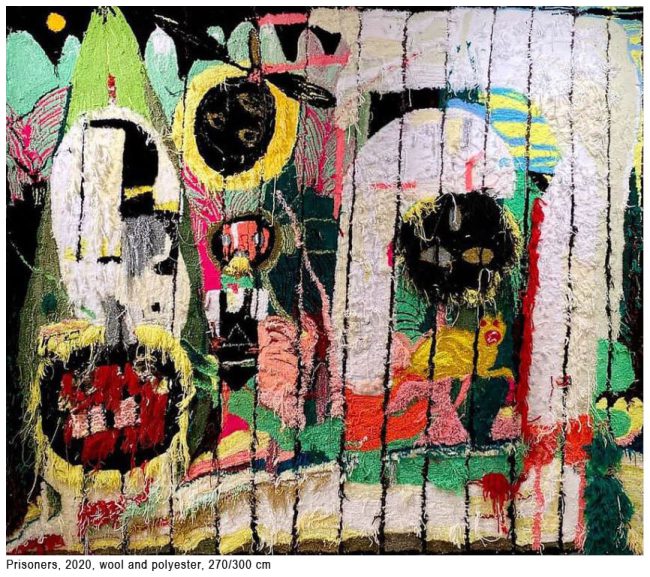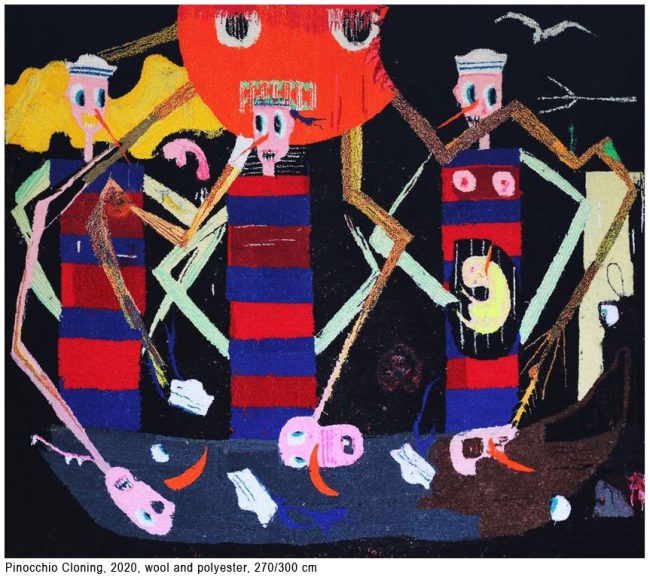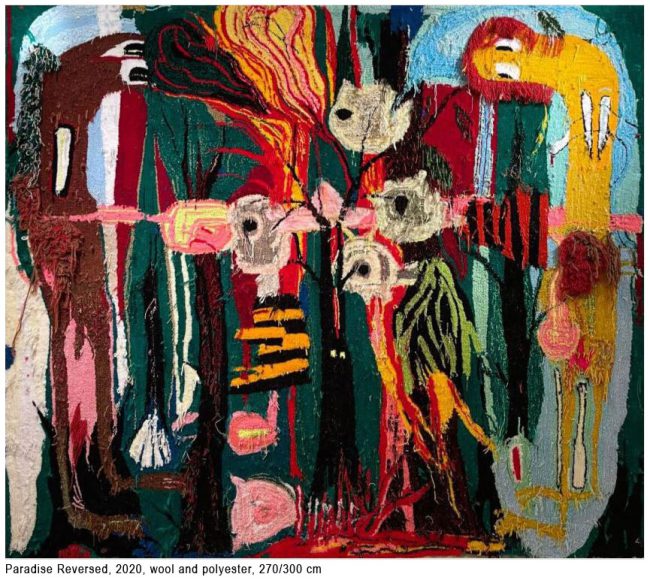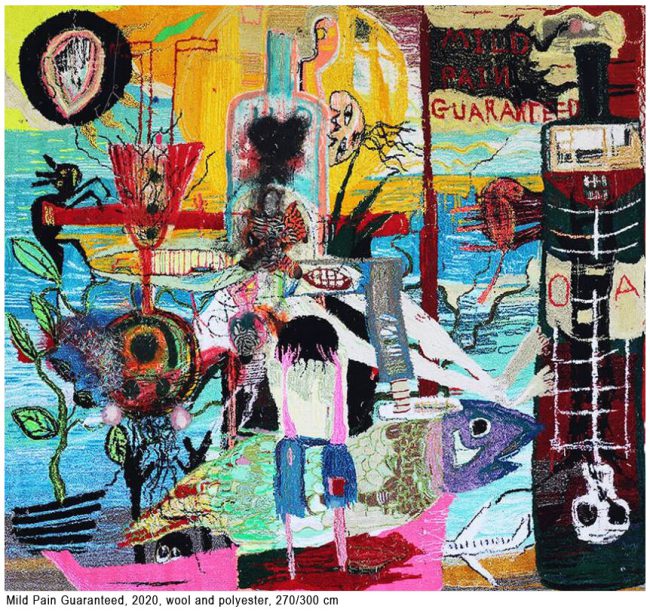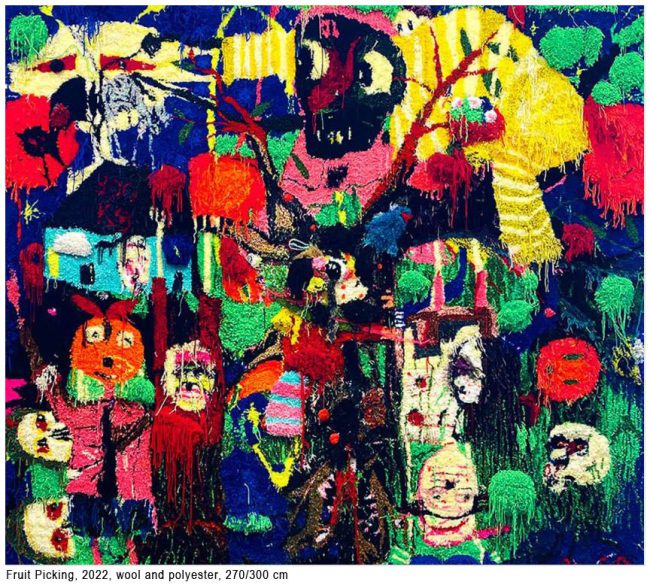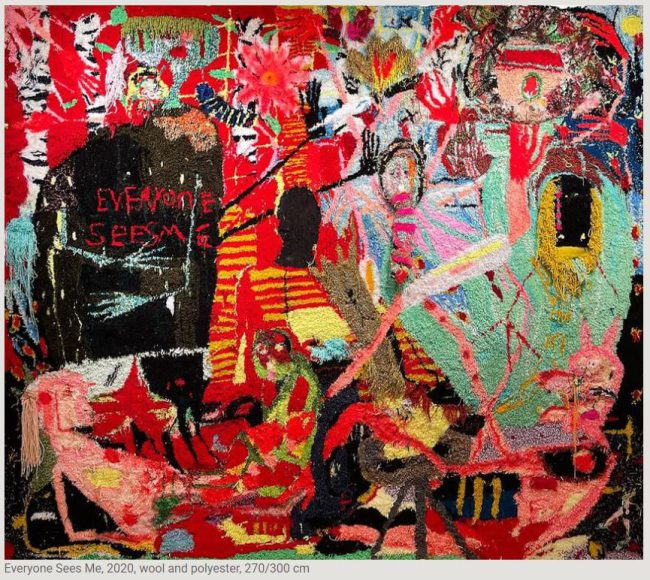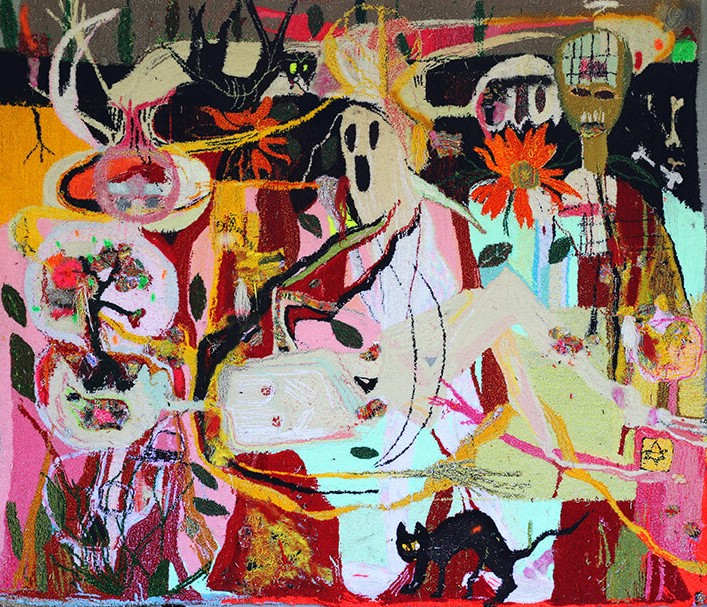Tapestries Series
I was born in Chernovitz, Ukraine, where it was very common to have tapestries to warm up the home. My grandmother and parents brought tapestries with them when they emigrated to Israel and insisted on keeping them, even though Israel is a very hot country. I grew up surrounded by them. The heat was unbearable but the tapestries were colorful: some were vulgar, others were based on famous works of art. From a very young age, art and tapestries were connected in my mind, long before I heard about the tapestry tradition of the great masters.
I’ve wanted to make my own tapestries for a long time. But only in the last three years have I found a way to make that happen. Maybe it is for the best, because I came to the medium as an experienced artist full of ideas, some of which had already been tested in other media.
At the same time, I was like a child because I had to learn from scratch how to work with a new technique. A lot of accidents happened along the way: the tufting gun broke down repeatedly, it made holes in the fabric, or suddenly started working differently, with long threads. It was frustrating but at the same time very exciting – a whole new experience – and these mistakes all somehow ended up enriching the work. In fact, I purposely repeated some of the mistakes and they have become an integral part of my working method.
There is a big difference between tufting guns and brushes but I have discovered that the tapestries I make turn out no less expressive than my paintings and share with them the same artistic language. The images that emerge describe a mythological world, unstable, chaotic, in constant motion. The characters – hybrids, demons, angels, Adam, Eve, humans, pets and animals – are trapped together in a circus that is out of control. But nothing here is personal: these are only nature’s forces playing with humanity.
I live and work in the middle of a neglected orchard. The area is fairly wild and nature is always strongly felt. The isolation that everyone has felt this past years (because of the COVID-19 pandemic), and the climate issues that now regularly make the news, are realities that in many ways have been part of my physical and mental routine for a long time. Nature taking over and regaining territory, COVID-19 spreading, the sense of being closed in, of chaos and entropy, are themes that strongly inform the tapestries. In that sense, these works form a post-apocalyptic series in which nature has overthrown human dominion and only scattered elements of society and technology remain.
I was born in Chernovitz, Ukraine, where it was very common to have tapestries to warm up the home. My grandmother and parents brought tapestries with them when they emigrated to Israel and insisted on keeping them, even though Israel is a very hot country. I grew up surrounded by them. The heat was unbearable but the tapestries were colorful: some were vulgar, others were based on famous works of art. From a very young age, art and tapestries were connected in my mind, long before I heard about the tapestry tradition of the great masters.
I’ve wanted to make my own tapestries for a long time. But only in the last three years have I found a way to make that happen. Maybe it is for the best, because I came to the medium as an experienced artist full of ideas, some of which had already been tested in other media.
At the same time, I was like a child because I had to learn from scratch how to work with a new technique. A lot of accidents happened along the way: the tufting gun broke down repeatedly, it made holes in the fabric, or suddenly started working differently, with long threads. It was frustrating but at the same time very exciting – a whole new experience – and these mistakes all somehow ended up enriching the work. In fact, I purposely repeated some of the mistakes and they have become an integral part of my working method.
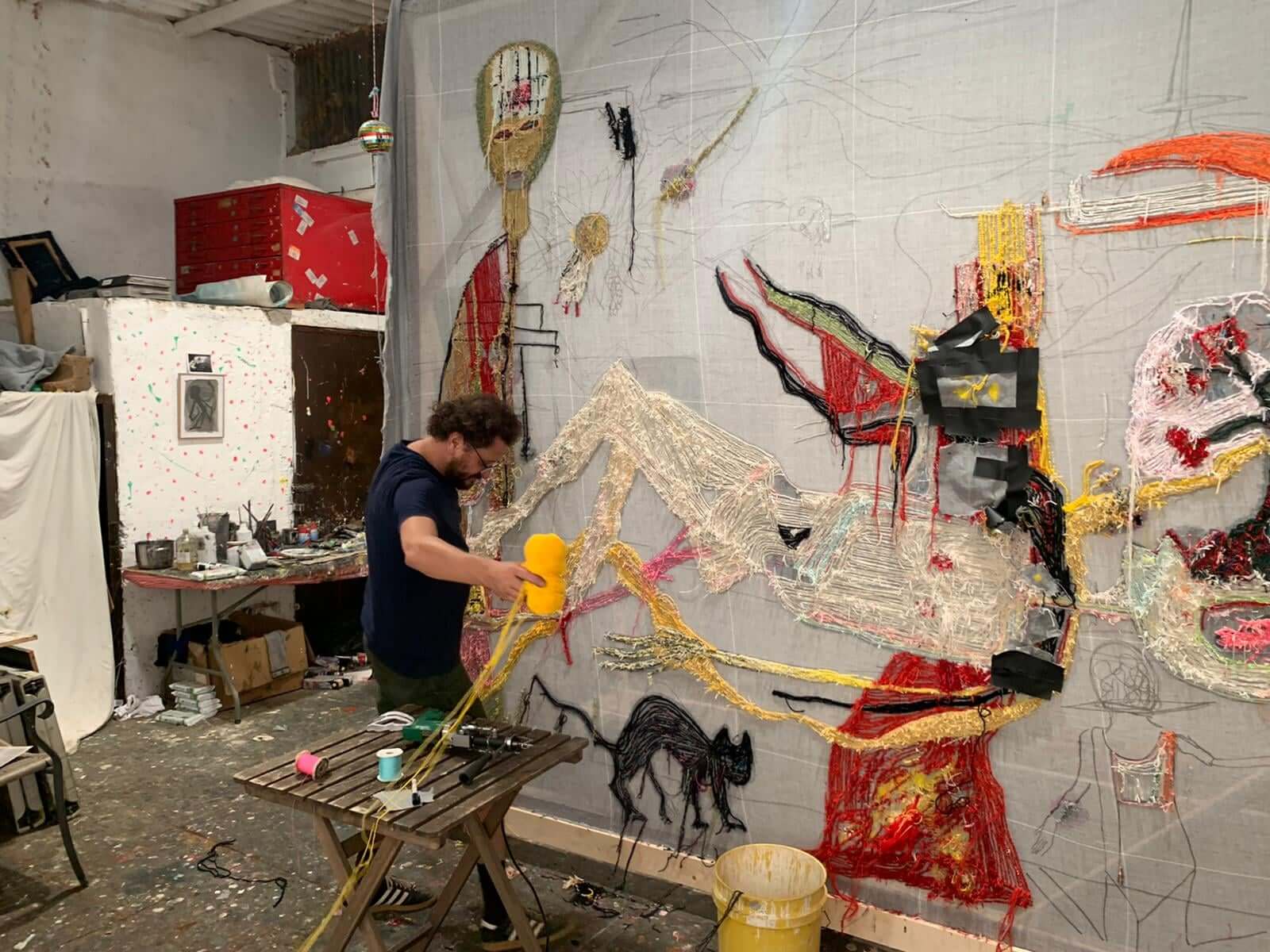
There is a big difference between tufting guns and brushes but I have discovered that the tapestries I make turn out no less expressive than my paintings and share with them the same artistic language. The images that emerge describe a mythological world, unstable, chaotic, in constant motion. The characters – hybrids, demons, angels, Adam, Eve, humans, pets and animals – are trapped together in a circus that is out of control. But nothing here is personal: these are only nature’s forces playing with humanity.
I live and work in the middle of a neglected orchard. The area is fairly wild and nature is always strongly felt. The isolation that everyone has felt this past years (because of the COVID-19 pandemic), and the climate issues that now regularly make the news, are realities that in many ways have been part of my physical and mental routine for a long time. Nature taking over and regaining territory, COVID-19 spreading, the sense of being closed in, of chaos and entropy, are themes that strongly inform the tapestries. In that sense, these works form a post-apocalyptic series in which nature has overthrown human dominion and only scattered elements of society and technology remain.

